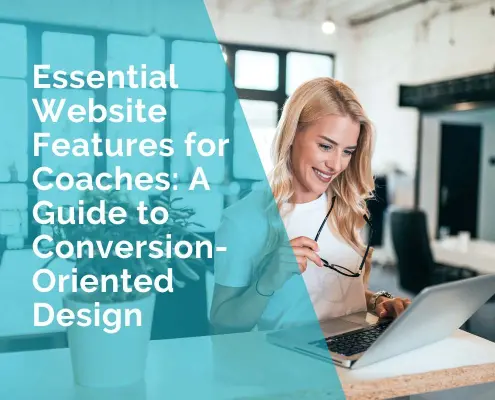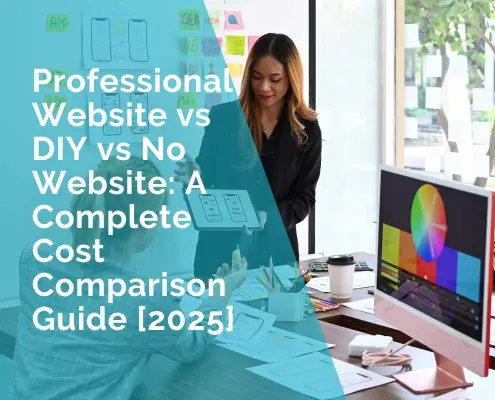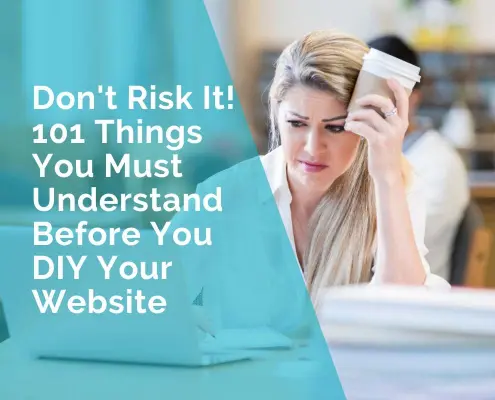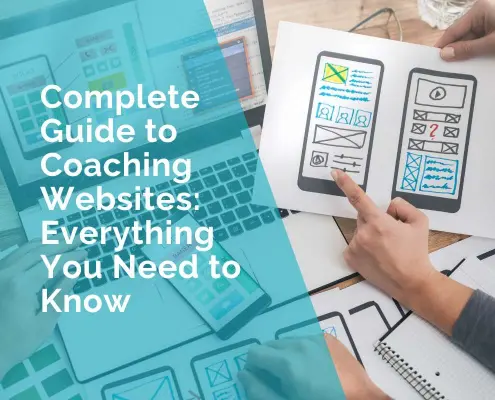SEO for Startups: A Step-by-Step Guide to Boosting Online Visibility
As a startup, you’ll want your marketing efforts to pay off as soon as possible. You’ll also want them to keep working for you even when you stop investing in them. The goal is to have them snowball into an effective inbound marketing strategy.
Here are some SEO stats, which explain why investing in search engine optimisation is the perfect strategy to invest in. Let’s explore how you can get started and what steps you need to take to boost your online visibility.
Start with Technical SEO
The first SEO step you need to take is ensuring that your website is optimized from a technical standpoint. This will both improve your site’s user experience and help you rank higher.
Slow websites, websites that have too much unused or unnecessary code on a page, or websites with a large layout shift will not be favored by search engines.
Here’s a short technical SEO checklist to get you started:
- Ensure you pass the Core Web Vitals test.
- Ensure there are no crawl errors.
- Ensure that redirects are executed properly and that no internal links are pointing to them.
- Use an SSL certificate.
- Ensure your sitemap is optimized and uploaded to Google Search Console.
- Make sure the robots.txt file has been optimized.
- Add structured data to every page.
- Use a CDN if you are serving an audience from more than one country.
- Delete any unused plugins.
- Cache your pages.
- Minify all JS and CSS code.
Of course, there’s more to technical SEO, but ticking these boxes will get you started on the right foot. To make your job simpler, you may consider using SEO Analyzer.
Research Your Competition
Your next step is to check out your competitors. Understanding what they are currently doing in terms of search engine optimization will help you determine how much effort will be required to outrank them.
You will need to look at several aspects of your competitors’ online presence. First, check out the keywords they are ranking for and what kinds of pages are ranking for what kinds of keywords. This will help you get a basic understanding of search intent and the topic clusters and keyword clusters they are targeting.
Run a basic website audit of their websites and see how well they are optimized. How do they write their meta descriptions? How fast do their pages load? Is their code bloated? This information will help you create a website that performs better and thus has a realistic chance of ranking higher.
Check out their backlinks, too. See which pages attract the most backlinks, and try to determine which ones are organic and which ones were built via blogger outreach. This will help you understand how much you will need to invest in your own link-building efforts. It will also help you find keywords you can easily rank for without any backlinks.
Finally, try to get a feel for their overall presence and branding. What are they doing well? What can you do better? What kind of content are they producing? What is their content lacking? Look for the easy wins and gaping opportunities you can capitalize on the fastest.
Invest Time in On-Page SEO
Now that you know what you are up against, it’s time to start optimizing each individual page. This means you will need to do some keyword research first to determine what keywords you want to include and try to rank for.
Before you dive into a keyword research tool, write down all the obvious terms someone would use when looking for the product, service, or topic that your page is about. Use semantic SEO principles to map out relevant terms and phrases that people will expect to see on a page.
Once you have your initial list, check what SEO tools are recommending. Don’t trust any of their metrics blindly, as they can be quite wrong. Still, it’s good to know whether a search term is likely to see lots of monthly searches or not.
Include all the relevant keywords on your page in an organic, natural way. You don’t have to try and hit any specific numbers. As you write, you will include a lot of relevant terms anyway.
Don’t forget to optimize on-page elements like titles, headings, and the meta description. Search engines will take them into account when indexing and ranking your pages.
Work with the Best Teams
If what we’ve just talked about sounds a bit confusing, vague, or complicated, fret not. SEO is a complex process, and it requires a lot of experience and continuous learning.
If you are completely new to it, you might want to consider hiring a well regarded agency. They will be able to optimize your website faster and better than you could. They will already have worked with clients like yourself, so they will know how to find ranking opportunities and analyze search intent.
When choosing the company or freelancer you want to work with, make sure to check out their testimonials and case studies. You want to partner with someone who is really good at what they do.
Subpar SEO won’t do you any harm, but it will slow down your progress. However, bad SEO, or using black hat SEO tactics, can significantly damage your website.
Map Out a Content Strategy
Modern SEO is all about content. Creating valuable, in-depth, relevant pages is the best way to rank high in search engine results pages and achieve your SEO goals.
In order to do that, you will need to tick the technical and on-page SEO boxes we’ve already mentioned. You will also need to come up with a content plan that is relevant to your business and that can get you the results you are looking for.
Start by stepping into your clients’ or customers’ shoes. What are the pain points they are trying to solve? What are they looking for, and what terms are they using to find it? What do they want to learn about? What are they confused about?
Try to identify topics that are most likely to be on the minds of your target readers. Create topic clusters that will allow you to establish yourself as an authority on a subject. Interlink these pages to further boost your SEO efforts.
Make sure that the topics you are writing about are directly related to your product or service. You don’t want to generate a lot of irrelevant and unqualified traffic that is highly unlikely to convert. Instead, you want to pop up for searchers who are looking for something you can provide.
Always consider search intent when writing a blog post (or creating any type of content, for that matter). This will ensure that you rank for the most relevant queries.
Be Smart About Off-Page SEO
Off-page SEO involves everything you do outside your website. It includes backlinks and social signals, as well as your overall online reputation.
It isn’t technically a necessary part of SEO for startups. If you write great content and optimize it well, chances are you will acquire lots of quality backlinks organically. However, in order to speed the process up and start ranking faster, it’s a good tactic to execute.
If you choose to build backlinks yourself, you can consider any of the more popular methods: blogger outreach and guest posting, HARO link building, broken link building, or acquiring directory listings.
Make sure to carefully vet each prospect, as you don’t want to be associated with any spammy websites. With Google’s latest algorithm updates, it could harm you more than before.
If you want to outsource this aspect of SEO, make sure to work with reputable link building agencies that can show you examples of their work. Avoid PBNs at all costs, and make sure they don’t build you tons of spammy content or forum backlinks that will end up damaging your reputation.
Monitor Your Performance
In order to make the most of your SEO efforts, you will need to carefully monitor the performance of your campaigns and tweak what needs to be tweaked.
Depending on your marketing goals, here are some of the SEO metrics you might want to track:
- Organic traffic
- Rankings per page
- Number of keywords a page ranks for
- Number of indexed pages
- Bounce rate
- Time on page
- Pages per visit
- Engagement rate
- Crawl errors
- Core Web Vitals scores
If you notice some of your KPIs are starting to drop, investigate what the cause might be. Note that you should always first check if there’s been an algorithm update recently. If yes, you shouldn’t fly into panic mode just because your website is seeing less traffic or losing rankings. It’s normal for search results to go completely haywire while an update is being rolled out.
If there is no update to speak of, try to pinpoint what the issue is. Are your pages in good working order? Is there something wrong with your caching plugin? Did you match search intent? Is there a new page in SERP that is much better than yours?
The longer your website is up, the more data you will have collected, and the better you will understand what causes fluctuations in rankings and traffic. Remember that Google’s tools like Analytics and Search Console don’t actually record data in real time, so they will need a couple of days to show real figures.
Wrapping Up
Now that you know what you need to do to boost your online visibility with SEO, you can get started right away. Don’t forget that it’s a long game, so you won’t see results overnight. However, if you tick all the required boxes, you will see a steady influx of traffic over time, and it will only keep growing.
***
Author
Sarah Kaminski












